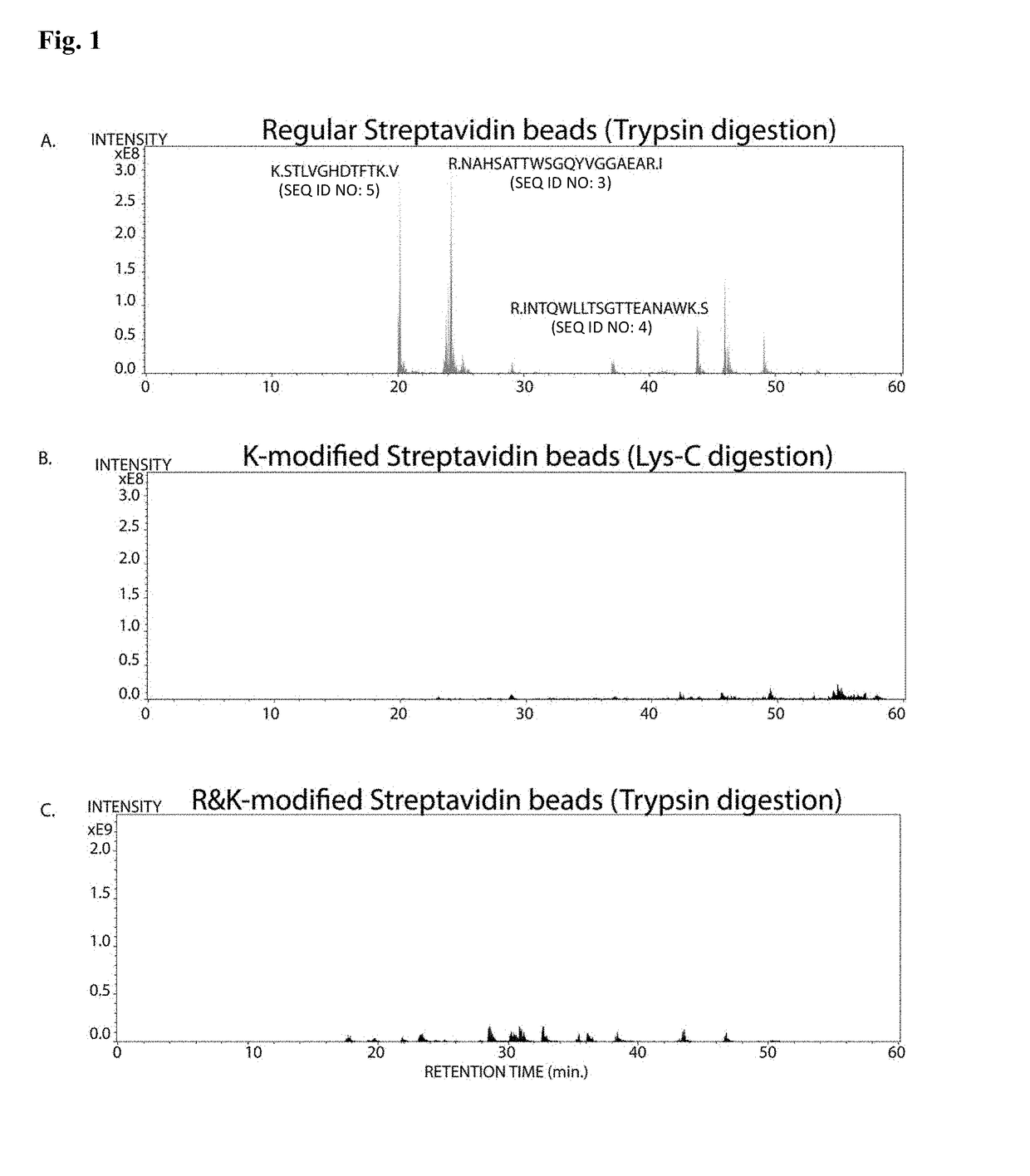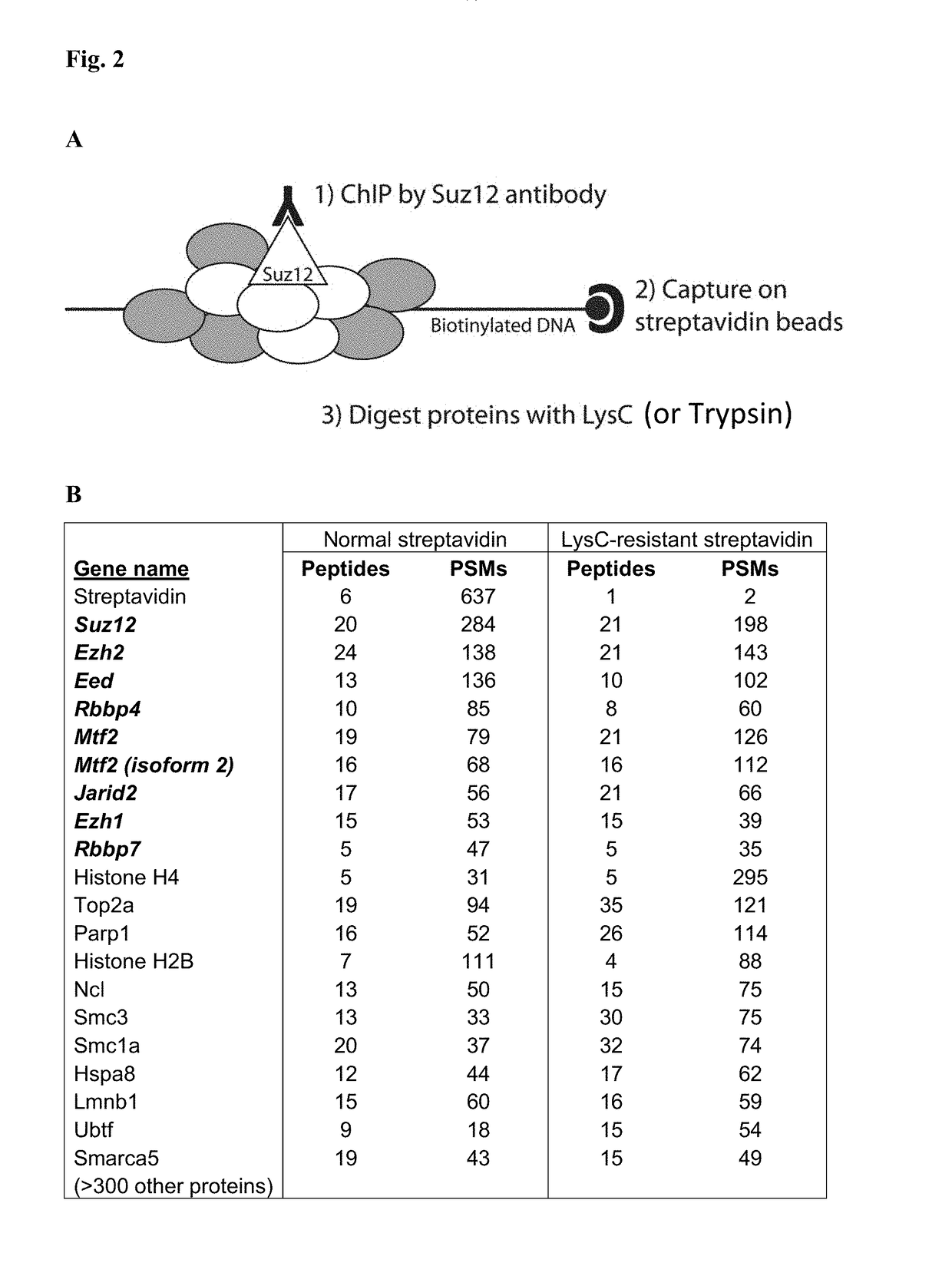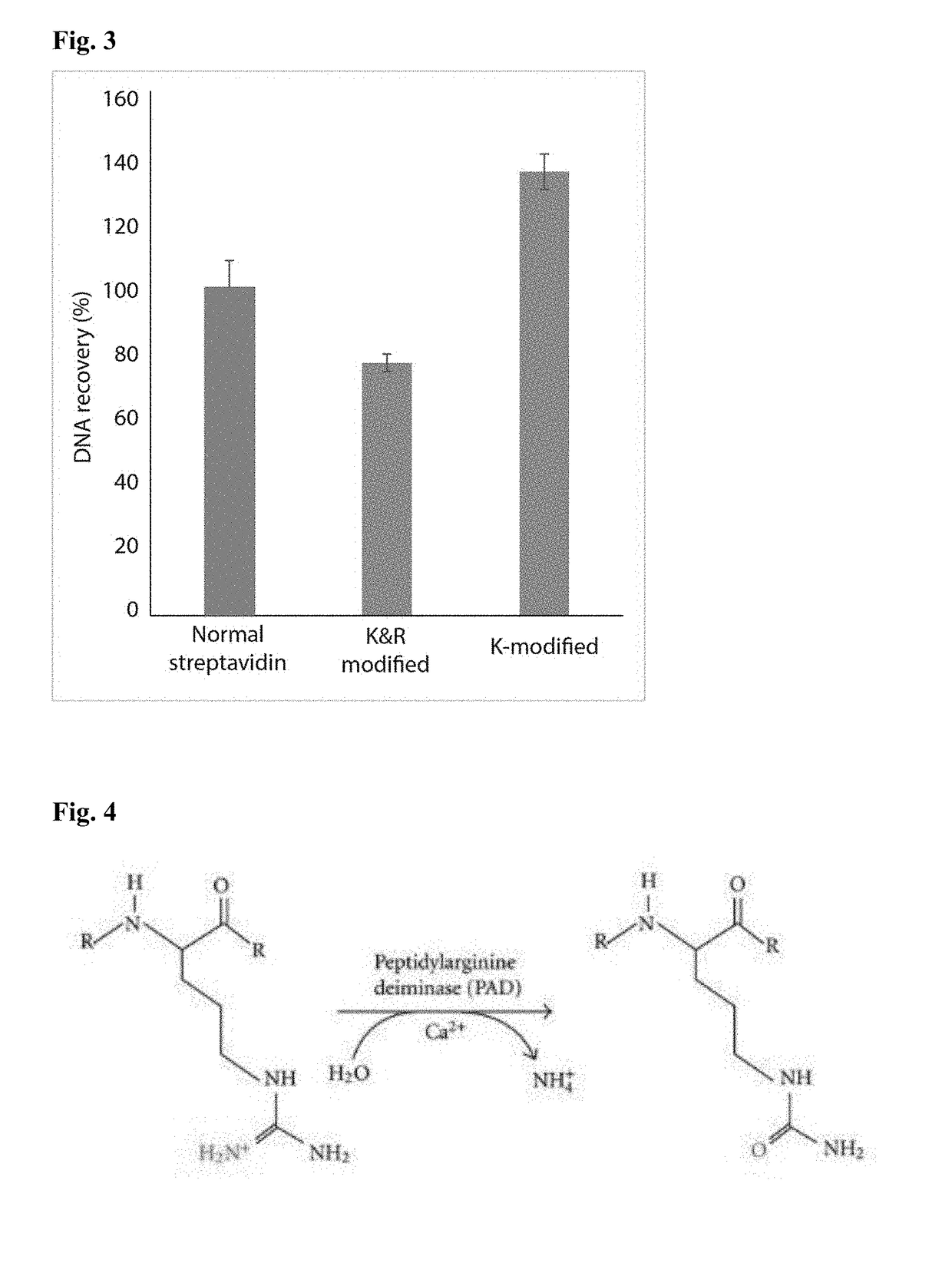Protease-resistant streptavidin
a technology of protease-resistant streptavidin and peptide, which is applied in the detection of post-translational modifications, instruments, peptides, etc., can solve the problem that full-length proteins are often too large for mass spectroscopic analysis
- Summary
- Abstract
- Description
- Claims
- Application Information
AI Technical Summary
Benefits of technology
Problems solved by technology
Method used
Image
Examples
example 1
Reductive Methylation of Lysine Residues in Streptavidin
[0235]The chemical reaction for the blocking of lysine residues is based on the reductive methylation method described by Boersema et al. with the modifications described below (Boersema P.J. et al. (2009) Nat. Protoc. 4(4):484-94).
[0236]The blocking reaction is carried out with the streptavidin already attached to beads. Subsequently, biotinylated proteins are bound to the blocked streptavidin and the samples are digested with the protease LysC, which cleaves the bound proteins at lysine residues without touching streptavidin.
Reagents
[0237]4.5 ml of 50 mM sodium phosphate buffer pH 7.5
[0238]250 μl of 600 mM NaBH3CN
[0239]250 μl of 4% formaldehyde
[0240]Acetic acid (Merck, cat. no. 1.00063)
[0241]Acetonitrile (ACN) (Biosolve, cat. no. 75-05-8)
[0242]Ammonia solution (25% (vol / vol), Merck, cat. no. 1.05432)
[0243]Formaldehyde (CH2O) (37% (vol / vol), Sigma, cat. no. 252549)
[0244]Formic acid (Merck, cat. no. 1.00264)
[0245]Sodium cyanobo...
example 2
Peptides Identified from Streptavidin before and after Chemical Blocking of Arginines and Lysines
[0260]Lysine and Arginine residues in streptavidin were blocked by subsequent reactions with reductive methylation and cyclohexadione, respectively. The blocking reactions were carried out with the streptavidin already attached to the beads. Subsequently, the streptavidin beads were subjected to tryptic digestion. The obtained peptide fragments were analysed by LC-MS.
TABLE 1Tryptic peptides generatedfrom un-modified streptavidinnumbermassof(Da)Sequencespectra1157.65K.VKPSAASIDAAK.K 1(SEQ ID NO: 6)1205.62K.STLVGHDTFTK.V198(SEQ ID NO: 5)1962.91R.NAHSATTWSGQYVGGAEAR.I 88(SEQ ID NO: 3)2034.03R.INTQWLLTSGTTEANAWK.S108(SEQ ID NO: 4)2154.01R.YDSAPATDGSGTALGWTVAWK.N 4(SEQ ID NO: 7)2510.16K.NNYRNAHSATTWSGQYVGGAEA 8R.I (SEQ ID NO: 8)2843.4 R.YVLTGRYDSAPATDGSGTALGWT 3VAWK.N (SEQ ID NO: 9)3220.63R.INTQWLLTSGTTEANAWKSTLVG 1HDTFTK.V (SEQ ID NO: 10)Total411
Tryptic digestion of unmodified streptavi...
example 3
Peptides Identified from Streptavidin before and after Chemical Blocking of Lysines and Enzymatic Conversion of Arginine to Citrulline
[0262]The enzyme Peptidylarginine deiminase (PAD) converts Arginine into citrulline (FIG. 4), which is not a substrate of trypsin thus resulting in resistance to proteolytic cleavage.
[0263]This was confirmed in an experiment where Lysines in streptavidin were blocked chemically (as in example 2) followed by enzymatic treatment with PAD to convert arginines into citrulline. Tryptic digestion led to the identification of 2 peptides in a total of 7 spectra (Table 3) which is in stark contrast to the 411 spectra observed after digestion of unmodified trypsin (Table 1), and indicating a similar level of protease resistance as chemically modified streptavidin (Table 2). Of note, detection of the arginine-flanked peptide
[0264]R.NAHSATTWSGQYVGGAEAR.I (SEQ ID NO: 3) was reduced from 88 from spectra in unmodified streptavidin (Table 1) to 6 spectra after PAD tr...
PUM
| Property | Measurement | Unit |
|---|---|---|
| dissociation constant KD | aaaaa | aaaaa |
| dissociation constant KD | aaaaa | aaaaa |
| dissociation constant KD | aaaaa | aaaaa |
Abstract
Description
Claims
Application Information
 Login to View More
Login to View More - R&D
- Intellectual Property
- Life Sciences
- Materials
- Tech Scout
- Unparalleled Data Quality
- Higher Quality Content
- 60% Fewer Hallucinations
Browse by: Latest US Patents, China's latest patents, Technical Efficacy Thesaurus, Application Domain, Technology Topic, Popular Technical Reports.
© 2025 PatSnap. All rights reserved.Legal|Privacy policy|Modern Slavery Act Transparency Statement|Sitemap|About US| Contact US: help@patsnap.com



